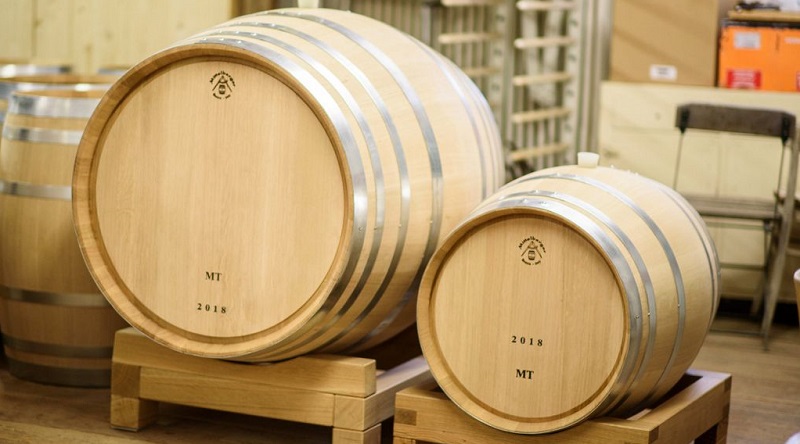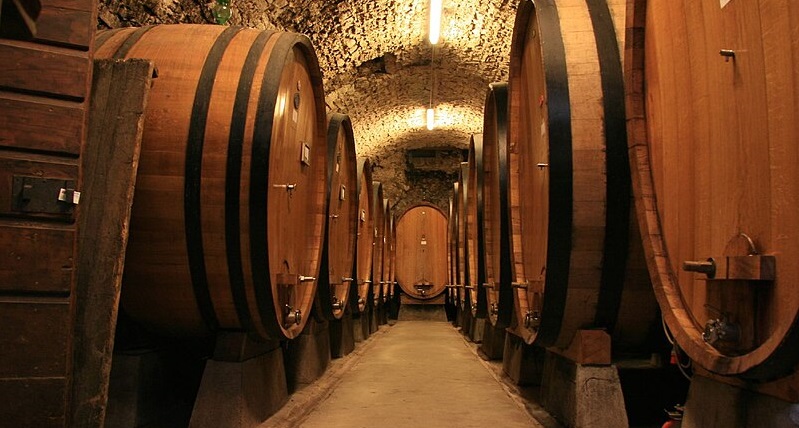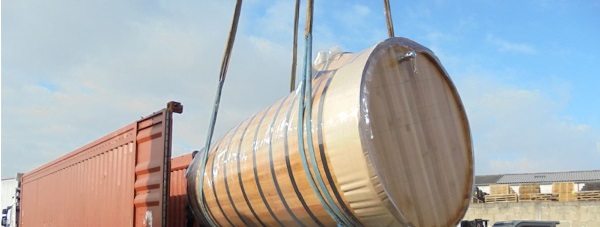Fermentation and Maturation Vessels
Oak Vessels

Barrique (225 litres) and Tonneau (500 litres) Picture: Mittelberger
Barrique
225 litres (59 gallons) Origin: Bordeaux, France
Commonly used for aging both red and white wines, particularly in Bordeaux and many New World regions. The barrique is known for imparting significant oak influence due to its relatively high surface area-to-volume ratio.
Pièce
228 litres (60 gallons) Origin: Burgundy, France
Standard barrel size in Burgundy, used primarily for aging Pinot Noir and Chardonnay. Similar in size to the barrique, but specific to Burgundy winemaking traditions.
Tonneau
900 litres (238 gallons) Origin: Bordeaux, France
Larger than a barrique or puncheon, the tonneau is used for aging wine when a more subtle oak influence is desired. It's less common than the barrique but still used in certain winemaking practices.
Other Sizes
Bordeaux Hogshead
300 litres (79 gallons) Origin: Bordeaux, France
Slightly larger than a barrique, offering a more subtle oak influence due to the lower surface area-to-volume ratio. It is used for longer aging or for wines where less oak flavor is desired.
Hogshead
300 litres (79 gallons) Origin: Australia
Common in Australia for aging wines, particularly Shiraz. Like the Bordeaux hogshead, it offers a more moderate oak influence compared to smaller barrels.
Puncheon
450-500 litres (119-132 gallons) Origin: Various regions, including Australia and Spain
Larger than a barrique or hogshead, puncheons provide a softer oak influence due to the lower surface area-to-volume ratio. They are often used for aging wines where oak is desired but not dominant, such as certain Chardonnays or red wines with longer aging times.
Demi-Muid
600 litres (158 gallons) Origin: Rhône Valley, France
Common in the Rhône Valley and other French regions for both fermentation and aging. Due to its larger size, it imparts less oak influence compared to smaller barrels, making it suitable for wines that need subtle oak integration.
Butt
475-500 litres (125-132 gallons) Origin: Jerez, Spain (also used in Portugal)
Traditionally used for aging sherry and port. Butts are larger barrels that allow for slow aging and gentle oxidation, contributing to the development of complex flavors in fortified wines.
Italian Botti

Botti are large oval vats (1,000-10,000 litres) traditionally used in Italy for fermenting and aging wines, particularly in regions like Tuscany and Piedmont.
Botti allow for long aging with minimal oak influence, ideal for preserving a wine’s natural characteristics. The barrels are so large, old and many-times used, that the oak impact on the wine is virtually null.
The use of Slavonian oak, a much more neutral wood than French or American oak, results is a maturation that is all about oxidation.
Frence Foudre

Foudre are very large wooden vats (2,000-10,000 litres), used for fermenting or aging wine.
Foudres provide minimal oak flavor due to the large size, but they allow for slow oxidation, contributing to the development of complex wine textures and flavors over time.
Origin: France and Germany (Rhône and Alsace)